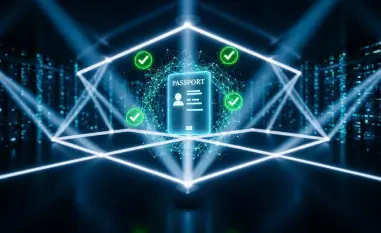When contemplating the potential shifts in U.S. cybersecurity strategies under a prospective Trump administration, it is crucial to acknowledge the complexities wrought by the perpetual cyber threats that defy political boundaries. While some aspects of the Biden administration’s cybersecurity approach may be dismissed, others could persist, especially those aligning with a broader strategic continuum. The U.S. faces the persistent challenge of defending against sophisticated cyber threats, whether from state actors, criminal syndicates, or other malicious entities. Understanding the potential changes and continuities in national and private sector cyber defense strategies is vital for both policymakers and industry stakeholders.
Biden’s National Cybersecurity Strategy
In March 2023, the Biden administration unveiled its National Cybersecurity Strategy, a comprehensive response to a spate of high-profile cyber incidents such as the SolarWinds, Microsoft Exchange, Colonial Pipeline, and JBS Foods attacks. This strategy aimed to induce two fundamental shifts: rebalancing responsibility and realigning incentives. The goal was to shift the cybersecurity burden to organizations best equipped to mitigate risks and to incentivize long-term investments designed to counter immediate threats while preparing for a resilient future. This dual focus highlights an attempt to ensure that those with the capability to make significant security improvements are held accountable, promoting a more proactive and sustained approach to national cyber defense.
To achieve these shifts, the strategy outlined five foundational pillars: defending critical infrastructure, disrupting and dismantling threat actors, shaping market forces to drive security and resilience, investing in a resilient future, and forging international partnerships to pursue common goals. One of the most ambitious and consequential parts of Biden’s strategy proposed legislation to hold software companies liable for failing to uphold a duty of care to consumers, businesses, or critical infrastructure providers. This legislative initiative signifies a proactive stance toward compelling tech companies to prioritize security and ensure robust measures are in place to protect their products and services from exploitation. Such a policy underscores the Biden administration’s commitment to systemic change in how cybersecurity responsibilities are distributed.
Potential Rejection of Increased Regulation
Given former President Trump’s general stance against increased regulation of the private sector, it is anticipated that a possible Trump 2.0 administration would likely reject the aspects of Biden’s strategy that entail heavier regulation of private companies. Nevertheless, cybersecurity remains a bipartisan priority, and many of Biden’s strategies build on the groundwork laid during the first Trump administration. This suggests that some continuity in strategic objectives might be expected. U.S. cybersecurity law, described as a “patchwork quilt” of state and federal regulations, often leads to overlapping or conflicting rules. This regulatory complexity can cause inefficiencies within cybersecurity teams, which may focus more on compliance than on taking substantive security measures.
Harmonizing these regulations to achieve government efficiency and foster a favorable industrial environment could become a priority for a new Trump administration. This objective aligns well with elements of Biden’s National Cybersecurity Strategy, establishing a constructive and bipartisan foundation for future cybersecurity policies. The notion of simplifying and unifying regulatory practices to eliminate redundancy and enhance actual security outcomes is likely to find consensus across political lines, reflecting a shared understanding of the necessity for streamlined and coherent cybersecurity governance.
Continuation of “Defend Forward” Operations
A notable aspect expected to persist under a new Trump administration is the “defend forward” operations introduced under the 2018 Department of Defense (DoD) Cyber Strategy. These proactive cyber operations aim to disrupt malicious actors and mitigate their capabilities before they can target U.S. interests. The emphasis on preemptive measures demonstrates a strategic shift toward offensive cybersecurity tactics, seeking to neutralize threats at their source. Public examples of “defend forward” operations include actions taken against Russia’s Internet Research Agency to safeguard the 2018 midterm elections and efforts to undermine the Trickbot botnet ahead of the 2020 elections.
The 2023 DoD Cyber Strategy, which superseded the 2018 version, reaffirmed the continuation of the “defend forward” policy, drawing from lessons learned in past operations. This enduring commitment to proactive defense highlights an acknowledgment of the evolving nature of cyber threats and the necessity for dynamic strategies to combat them. Whether or not a Trump administration introduces new cyber strategies, the likelihood of maintaining a proactive defense against foreign cyber threats indicates a recognition of the importance of offensive operations to preempt potential security breaches.
Addressing Major Cyber Incidents
A pressing issue for a potential second Trump administration would be addressing significant cyber incidents, much like those faced during Biden’s tenure, such as the SolarWinds intrusion. One specific challenge is the Salt Typhoon telecom hack attributed to a Chinese hacking group, considered one of the most severe breaches in U.S. telecom history. This incident involved extensive compromise of telecom networks and unauthorized access to wiretapped communications, underscoring the vulnerabilities within critical infrastructure that need urgent attention. The exact mechanism of the attack remains publicly unclear, yet its implications reveal the depth of infiltration that foreign adversaries can achieve.
A rigorous investigation into the Salt Typhoon hack would likely be pursued by a new Trump administration, potentially involving the Cyber Safety Review Board (CSRB). Established to review major cyber incidents and recommend improvements, the CSRB’s engagement would be instrumental, similar to its impactful report on the Microsoft Exchange Online Intrusion. This report urged immediate actions by Microsoft to prevent future breaches and highlighted the value of thorough, independent reviews to inform more robust cybersecurity practices. The CSRB’s involvement could ensure that lessons are learned and vulnerabilities are addressed comprehensively.
Harmonizing Cybersecurity Regulations
When considering the potential changes in U.S. cybersecurity strategies under a possible Trump administration, it’s important to recognize the ongoing and complex nature of cyber threats that transcend political lines. While some elements of the current Biden administration’s cybersecurity policies may be set aside, others might continue, especially those that fit into a larger strategic framework. The country remains under continuous threat from advanced cyber attacks coming from state actors, criminal organizations, and other malicious entities. Grasping the possible shifts and continuities in national and private sector cyber defense strategies is essential for both policymakers and industry leaders. They must stay alert to these threats and be prepared to adapt strategies and policies in response. It’s not simply about changing leadership but about understanding how new policies might build on or diverge from existing frameworks. This insight will help ensure the resilience and security of U.S. cyber infrastructure in the face of evolving cyber threats.













